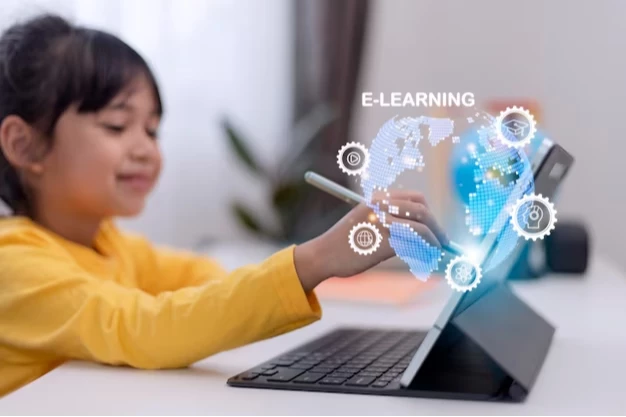- 30 May 2023
Gamification in E-Learning: Making Education Fun and Effective

In recent years, e-learning has become a ubiquitous part of modern education and professional development. Yet, one common challenge is keeping learners engaged and motivated throughout their digital learning journeys. This is where gamification comes into play, transforming traditional e-learning into an interactive, engaging, and effective experience. In this blog post, we will explore the benefits of incorporating gamification into e-learning platforms.
Understanding Gamification:
Gamification is the integration of game elements, such as points, rewards, competition, and challenges, into non-game contexts, such as e-learning. It leverages the inherent human desire for achievement and competition to motivate learners to actively participate in their educational activities.
Benefits of Gamification in E-Learning:
Increased Engagement:
Gamified elements, such as badges, leaderboards, and progress tracking, capture learners' attention and keep them engaged throughout their learning journey. Learners become more invested in their educational progress as they strive to earn rewards and recognition.
Enhanced Motivation:
Gamification provides immediate feedback and a sense of accomplishment, motivating learners to complete tasks and achieve their goals. It can turn mundane or challenging learning tasks into exciting challenges.
Improved Retention:
The interactive and experiential nature of gamification enhances information retention. Learners are more likely to remember and apply what they've learned when they've actively engaged with the content.
Effective Learning:
Gamification encourages active learning through problem-solving, critical thinking, and decision-making. Learners are prompted to explore, experiment, and learn from their mistakes in a safe and engaging environment.
Personalized Learning Paths:
Gamified e-learning platforms can adapt to individual learners' progress and preferences, offering personalized learning paths. This ensures that each learner receives content tailored to their needs and skill level.
Healthy Competition:
Leaderboards and competitive challenges foster a sense of competition among learners, driving them to excel and outperform their peers. Healthy competition can spur continuous learning and improvement.
Real-World Application:
Gamification often involves scenarios and simulations that mirror real-life situations. Learners can practice applying their knowledge and skills in a safe, controlled environment, preparing them for real-world challenges.
Social Interaction:
Gamification features like team-based challenges or collaborative games encourage social interaction among learners. This collaborative learning environment can foster knowledge sharing and peer support.
Continuous Feedback:
Gamified e-learning platforms provide continuous feedback, allowing learners to gauge their progress and identify areas for improvement. This real-time feedback loop promotes a growth mindset.
Fun and Enjoyment:
Above all, gamification makes learning enjoyable. It transforms education from a chore into a source of enjoyment, which can lead to longer and more dedicated study sessions.
Gamification in e-learning has the potential to revolutionize the way we approach education and professional development. By incorporating game elements into learning platforms, we can enhance engagement, motivation, and knowledge retention. As e-learning continues to grow, gamification will play a pivotal role in making education not only effective but also fun and memorable.


